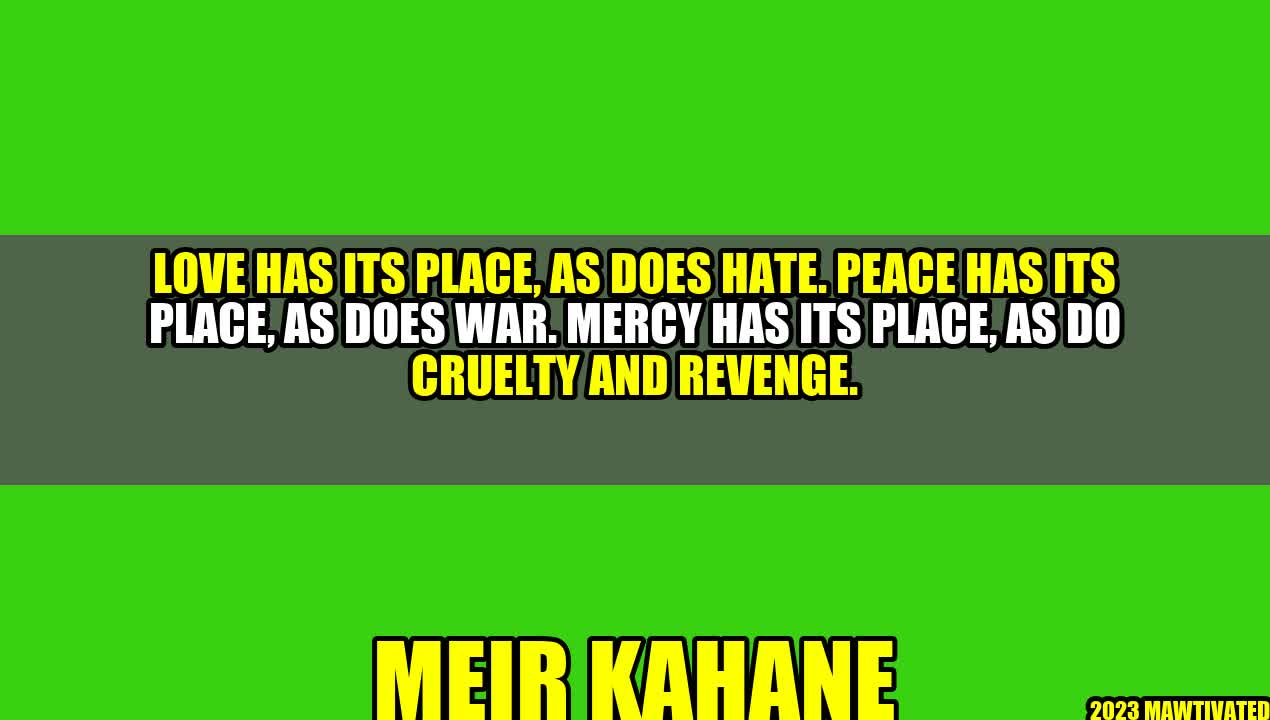Love, Hate, Peace and War: Understanding the Place of Different Emotions in Life

An Inspiring Story of Forgiveness and Love
There was once a man named Thompson who had been wrongfully imprisoned for 25 years. He was finally released and given $100 compensation for each year he had been incarcerated. However, instead of seeking revenge or harboring hatred towards the people who had wrongly accused him, Thompson decided to use the money to set up a foundation that helped ex-convicts reintegrate into society. He believed that forgiveness and love had the power to transform both his own life and the lives of others.
Author – Meir Kahane
Meir Kahane was an American-Israeli rabbi and political activist who believed in the importance of Jewish nationalism and self-defense. He was also known for his controversial views on racism and violence. Kahane believed that Jews needed to protect themselves against anti-Semitic attacks and should not rely solely on the authorities for protection.
Examples of Different Emotions and Their Place in Life
Love
Love is a powerful emotion that can bring people together and create strong bonds. It can be expressed in many forms, such as romantic love, the love between family members, or love for humanity. Love is often associated with positive feelings like happiness, joy, and contentment.
“Love is patient, love is kind. It does not envy, it does not boast, it is not proud. It does not dishonor others, it is not self-seeking, it is not easily angered, it keeps no record of wrongs. Love does not delight in evil but rejoices with the truth. It always protects, always trusts, always hopes, always perseveres.” – 1 Corinthians 13:4-7
Hate
Hate is a negative emotion that can lead to conflict and destruction. It can be directed towards individuals, groups, or even entire nations. Hate can be based on a variety of factors such as race, religion, politics, or personal experiences. However, hate can also be a powerful motivator for change and can inspire people to fight against injustice and oppression.
Peace
Peace is the absence of conflict and the presence of harmony and tranquility. It can be both a state of mind and a social condition. Peace can be achieved through diplomacy, nonviolence, and cooperation. However, peace can also be fragile and easily disrupted by external forces such as war, terrorism, or natural disasters.
War
War is the ultimate expression of conflict and violence. It can arise from a variety of causes such as national interests, ideological differences, or territorial disputes. War can have devastating consequences for both the victors and the defeated, including loss of life, displacement, and trauma. However, war can also be a necessary evil to preserve liberty and defend against aggression.
Mercy and Cruelty
Mercy and cruelty are two opposite ends of the spectrum when it comes to dealing with others. Mercy is the act of showing compassion and forgiveness towards those who have wronged us, while cruelty is the act of causing intentional harm or suffering. Both mercy and cruelty can have significant impacts on individuals and society, and it’s important to understand the place of each emotion in different situations.
Practical Tips for Dealing with Different Emotions
- Try to express your emotions in a healthy and constructive way.
- Don’t let your emotions control your actions or decisions.
- Practice forgiveness and empathy towards yourself and others.
- Be open-minded and willing to listen to other perspectives.
- Find healthy ways to cope with negative emotions such as exercise, meditation, or therapy.
- Seek help and support when needed.
Conclusion
In conclusion, different emotions such as love, hate, peace, and war all have their place in life. It’s important to understand the role of each emotion and to recognize when they can be beneficial or harmful. By learning to express our emotions in a healthy way and practicing forgiveness and empathy, we can create a more harmonious and peaceful world.
- Love and forgiveness have the power to transform our lives and the lives of others.
- Hate and cruelty can lead to conflict and destruction, but can also inspire change and action against injustice.
- Peace and war are two opposite ends of the spectrum when it comes to conflict resolution, and it’s important to choose the appropriate response depending on the situation.

Curated by Team Akash.Mittal.Blog
Share on Twitter
Share on LinkedIn